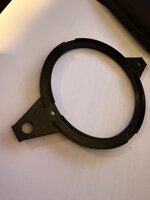| Setup | Resistance | Power Source | Wattage | Voltage | Amperage | Equalizer Impact (Before) | Equalizer Impact (After) |
|---|---|---|---|---|---|---|---|
| Factory (4Ω + 8Ω) | 2.667 ohms | Head Unit (12W) | ~12–15W | ~6–6.93V | ~2–2.6A | Stable, no cutouts. Designed for 2.667 ohms. | ~10–12W, ~5.5–6V. Cutouts unlikely. |
| Factory (4Ω + 8Ω) | 2.667 ohms | BeatSonic (25W) | ~37.5W | ~10V | ~3.75A | Stable, no cutouts. Matches stock load. | ~30–35W, ~8–9V. Cutouts possible. |
| Aftermarket (4Ω + 4Ω) | 2 ohms | Head Unit (12W) | ~12–15W | ~5–6V | ~2–3A | Possible clipping, cutouts if protection engages. | ~10W, ~5V. Cutouts possible. |
| Aftermarket (4Ω + 4Ω) | 2 ohms | BeatSonic (25W) | ~25–50W | ~7–10V | ~3–5A | Cutouts likely due to protection or instability. | ~30–40W, ~7–9V. Cutouts likely. |
Grok "AI" produced this in response to the questions about speakers and beatsonic in the 1958 trim wiring.
Last edited:





